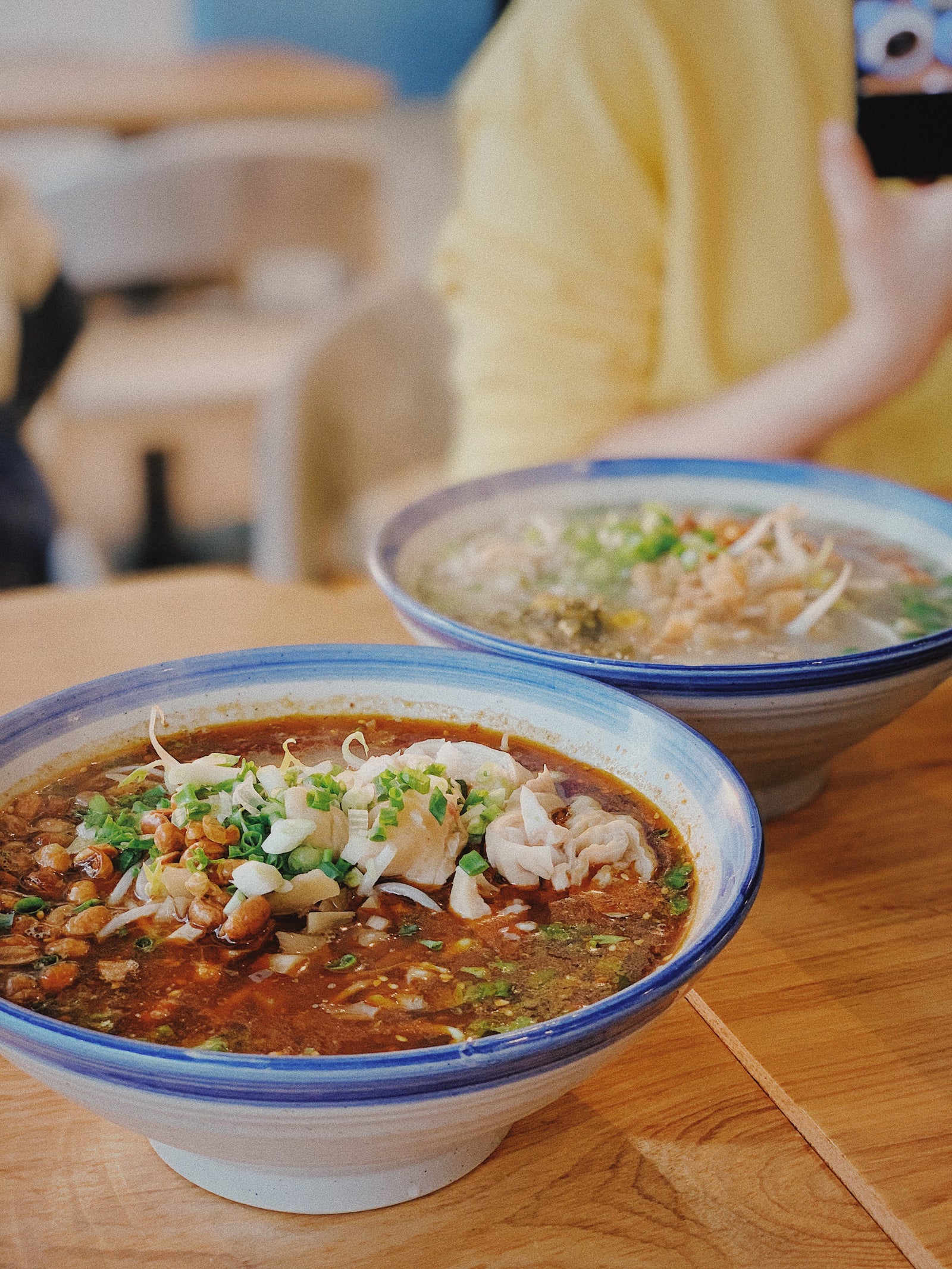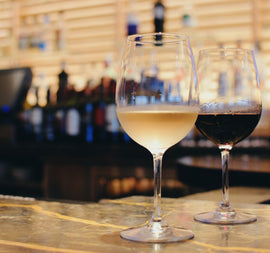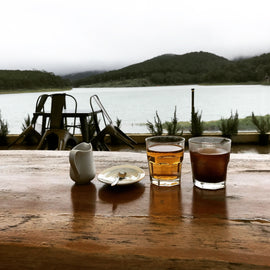Le Marche
Finally, the new year we all were waiting for is here! Usually this is the time for resolutions and planning for the months to come. If it’s too soon to make any trip plans we can at least prepare our wish list and look ahead to where we would like to go once we are free to travel again. I, like many of you, have a long list of possible destinations, one on the top is Le Marche.
I’m sure I’ve already told you how fascinated I am by this region - which is a mix of countryside that reminds one of Toscana and Umbria, with which shares its western border, outlined by the mountain range of the Umbro-Marchigiano Appennines. The long coastline, 173 km (107.5 miles) along the Adriatic Sea, is a stretch of sandy beaches interrupted only by the Conero promontory with the highest peak of 500 meters (1640 ft.) which marks the halfway point of the eastern side of the region.
Le Marche consists of five provinces: Ascoli Piceno in the south bordering with Lazio and Abruzzo, then Fermo, Macerata, Ancona (the regional capital) and Pesaro e Urbino on the northern side by Emilia-Romagna.
Le Marche has a rich history of art - the most famous being Raffaello Sanzio (Raphael), the major late-Renaissance painter and architect. Last year marked the 500th anniversary of his death. Many exhibitions of his works were planned all over Italy to celebrate this extraordinary artist but all was put on hold due to the pandemic. I must also mention Gioacchino Rossini, the famed composer of opera masterpieces like Il Barbiere di Siviglia or Guglielmo Tell, or Giacomo Leopardi, one of the most relevant poets of Italian literature, both sons of this prolific region.
Agriculture has always played an important role in the economy of the territory, and viticulture has become more relevant over the past decade. Le Marche wines, even if they haven’t yet reached the status of Tuscany, Piedmont or Campania, are becoming familiar to domestic and international consumers. Rosso Piceno, Rosso Conero, Offida, Lacrima di Morro d’Alba,Vernaccia di Serrapetrona, Verdicchio di Jesi, Verdicchio di Matelica are some of the DOC and DOCG representative of the region.
Since we like to keep an eye out for lesser-known wines and varietals, we are pleased to introduce you to two producers and their distinct stories and unique wines. Let’s begin the year with curiosity and an open mind - starting in the glass!
Chi ben comincia e’ a meta’ dell’opera!
Elio Longobardi, Italian Wine Specialist
PlumpJack Wine & Spirits – Noe Valley
Boccadigabbia, Le Grane, Colli Maceratesi Ribona DOC 2018
Winemaker:
Francesco Pennisi
Emiliano Falsini
Price per bottle / Price per case
$ 21 $ 252
About the Winery:
For many reasons Boccadigabbia is one of the most interesting estates in the Marche region. Until 1950 the estate belonged to Prince Luigi Girolamo Napoleon Bonaparte, direct descendant of the Napoleon we all know. In fact, ever since the early 19th century, French grapes were planted at Boccadigabbia under the Napoleonic administration, varietals the locals described as “bordò” and “francesi”. It, then, makes perfect sense that Elvio Alessandri, the present owner, decided to plant Sauvignon Blanc, Chardonnay, Pinot Gris, Merlot and Cabernet Sauvignon alongside the traditional Sangiovese, Montepulciano, Ribona and Verdicchio: the choice had a historical as well as qualitative significance. Elvio’s son Lorenzo works full time at the estate, the vineyards are supervised by the agronomist Luca Severini and the cellars are managed by the oenologist Francesco Pennesi with the consultancy of the well known oenologist Emiliano Falsini. The 23 hectares of vineyards stand on hills in two separate zones, Civitanova and Macerata. The international grape varieties are grown in Civitanova, while the Italian varietals are grown in Macerata. The estate takes in a low environmental impact, so that the practices in the vineyard are strictly environment friendly.
There are two cellars, an extremely modern one in Civitanova, which was completed in 2010, and an older one in Macerata, which was bought together with the vineyards by Elvio in 1996. The philosophy is to maintain tradition with the aid of modern technology, but also to maintain the particular character of the wines made with the Italian and international grape varieties of the estate.
Boccadigabbia is located in the district of Castelletta di Fontespina, on the first hills that rise from the Adriatic Sea, near by the medieval town of Civitanova Alta in Macerata province.
About the Winemaking:100% Ribona, also called Maceratino. It’s a rare grape varietal that is only grown in the province of Macerata. The vineyards stand in the old Montanello district of Macerata, where Pietro Paolo Floriani, who was a soldier and an architect (he designed the Floriana fortress of Malta), planted vines in 1626.
The grapes are handpicked in early September.
Following a gentle pressing, the must ferments about 12 days at a controlled temperature in stainless steel fermenters. After the first fermentation, whole grape berries, picked slightly over-ripe, are added to the wine. The resulting second fermentation, traditionally known at “fare le grane” (adding the berries), lasts further ten or so days and allows increased extraction of compounds and aromatic extracts from the grape skin.
Suggested Food Pairing
Deep fried vegetable plate, seafood soup or pasta dishes, baked branzino with cherry tomatoes and potatoes.
Tasting Notes:
Bright yellow golden with green hues when poured in the glass. Crunchy apple notes with herbs reminiscent of thyme, basil, and fennel on the nose, with tingling mineral accents to the palate. Long clean pleasant finish.
Fattoria Villa Ligi, Grifoglietto, Pergola Aleatico Riserva DOC 2015
Winemaker: Stefano Tonelli
Price per bottle / Price per case
$ 24 $ 288
The Tonelli family has been farming and making wine for three generations. In 1985 Francesco, an agronomist and a sommelier, decided to leave his job as a teacher and to dedicate himself completely to viticulture and wine making: he searched for rare and old vines of Vernaccia Rossa and had them reproduced by specialized nurseries. He also helped to establish the tiny “Pergola” appellation (of a total vineyard extension of barely 45 hectares and made up of just 3 producers).
His son Stefano, an oenologist, who, after having worked for a few wineries in Australia, is now helping his father with passion and dedication, supports Francesco.
The winery is located in Pergola (Pesaro e Urbino).
About the Winery:The Tonelli family has been farming and making wine for three generations. In 1985 Francesco, an agronomist and a sommelier, decided to leave his job as a teacher and to dedicate himself completely to viticulture and wine making: he searched for rare and old vines of Vernaccia Rossa and had them reproduced by specialized nurseries. He also helped to establish the tiny “Pergola” appellation (of a total vineyard extension of barely 45 hectares and made up of just 3 producers).
His son Stefano, an oenologist, who, after having worked for a few wineries in Australia, is now helping his father with passion and dedication, supports Francesco.
The winery is located in Pergola (Pesaro e Urbino).
Suggested Food Pairing
Charcutrerie and cheeses plate; minestra di ceci alla marchigiana (see recipe); roasted chicken; grilled pork chops and apples.
Tasting Notes:
Light brilliant red garnet in color. Pomegranate, cherry and rhubarb to the nose. The tasting analysis supports those impressions adding a fresh and earthy acidity tone.
(Marche chickpea soup)
Legumes are an intrinsic part of Marche’s culinary heritage. As with other central Italian regions, legumes have for long been a source of inexpensive protein for people who didn’t have access to large quantities of meat. Chickpeas, in particular, were used for hearty soups of mixed vegetables and pork scraps. This recipe is an example of this classic soup.
INGREDIENTS (serving 4)
- 3 tbsp of extra virgin olive oil, plus more for serving
- 100g of thick-sliced Parma ham, minced
- 2 garlic cloves, crushed and peeled
- 1 celery stick, finely chopped
- 1 carrot, peeled and finely chopped
- 1 onion, finely chopped
- 200g of dried chickpeas, soaked for 24 hours
- 1 tin of chopped tomatoes
- 2 liters vegetable stock, heated
- 100g of spinach, or baby chard
- fine sea salt, as needed
- freshly ground black pepper, as needed
- Heat the oil in a large pan set over a medium heat. Add the Parma ham and fry for 5 minutes, until the fat has rendered
- Stir in the garlic, celery, carrot and onion and cook until soft, about ten minutes, stirring often
- Next, add the drained chickpeas and the chopped tomatoes. Cover with stock and place a lid on top. Simmer for about 40 minutes, or until the chickpeas are very tender and the soup has come to the desired thickness
- Taste and season. Stir in the spinach or baby chard and allow them to wilt, about 2 minutes. Remove from the heat and serve with a swirl of extra virgin olive oil and black pepper to taste
Buon appetito!





